The Science of Roman Timekeeping: Sundials, Water Clocks, and Calendars Explained reveals how ancient Rome mastered the art of measuring and organizing time. Roman timekeeping was essential not only for daily life but also for legal affairs, religious ceremonies, and social events. Understanding their methods offers valuable insight into the roots of modern temporal systems.
Key tools and methods used by the Romans include:
- Sundials: Devices that measured time by casting shadows from the sun.
- Water Clocks (Clepsydras): Mechanical instruments tracking time through regulated water flow.
- Roman Calendars: Structured frameworks transforming lunar cycles into a solar-based system.
These innovations formed a sophisticated approach to time measurement, influencing how we divide hours today and how calendars govern annual cycles. Ancient Roman techniques bridged natural phenomena with human needs, laying groundwork still visible in contemporary timekeeping.
In addition to their advancements in timekeeping, the Romans also had a profound connection with their gods, as seen in their rituals and sacrifices. This belief system not only influenced their daily lives but also played a crucial role during important events that required precise timing.
Moreover, the trade and economy in Ancient Rome were foundational to its vast empire. The intricate systems in place reveal the significance of economic practices that shaped one of history’s most powerful civilizations.
Lastly, coins in ancient Rome were more than just a means of trade; they served as powerful tools for emperors to convey their authority and legitimacy. These small pieces of currency went beyond their basic purpose and became significant instruments for political messaging.
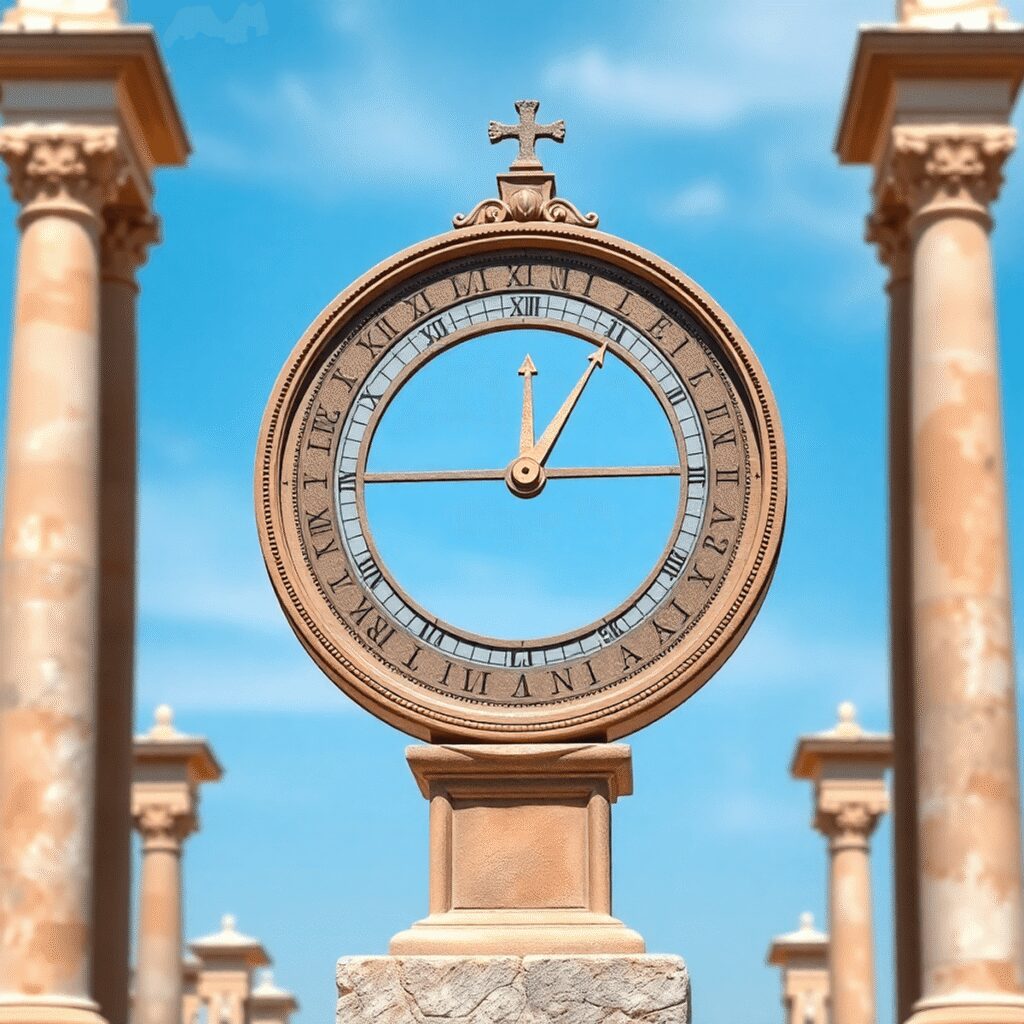
Sundials: Measuring Time with the Sun’s Shadow
Roman sundials relied on a simple yet effective principle: using a gnomon, a vertical rod or triangular blade, to cast shadows onto a flat surface marked with calibrated hour lines. As the sun moved across the sky, the position of the shadow shifted, indicating the time of day. These hour lines were carefully calculated to adjust for the changing angle of sunlight throughout the year, reflecting variations in day length during different seasons.
Key features of Roman sundials:
- Gnomon: The critical element that casts the shadow; its angle was often aligned with the Earth’s axis for accuracy.
- Hour Lines: Marked on a dial plate, these lines divided daylight into 12 hours, though their length varied with seasons—longer in summer, shorter in winter.
- Seasonal Calibration: Sundials accounted for solar declination changes by adjusting hour line spacing.
Types of sundials used by Romans
Romans adopted various types of sundials, including:
- Horizontal Sundials: Laid flat on surfaces like public squares or courtyards.
- Vertical Sundials: Mounted on walls facing south to catch sunlight effectively.
- Portable Sundials: Smaller versions used by travelers and officials.
Public placement was strategic. Large sundials stood prominently in forums and markets, serving communal timekeeping needs and marking daily schedules for civic activities and social events. Inscriptions near some sundials reflected cultural attitudes toward time, leisure, and life’s pace.
Roman sundials represent an essential chapter in The Science of Roman Timekeeping: Sundials, demonstrating practical astronomy applied to everyday life centuries before mechanical clocks emerged.
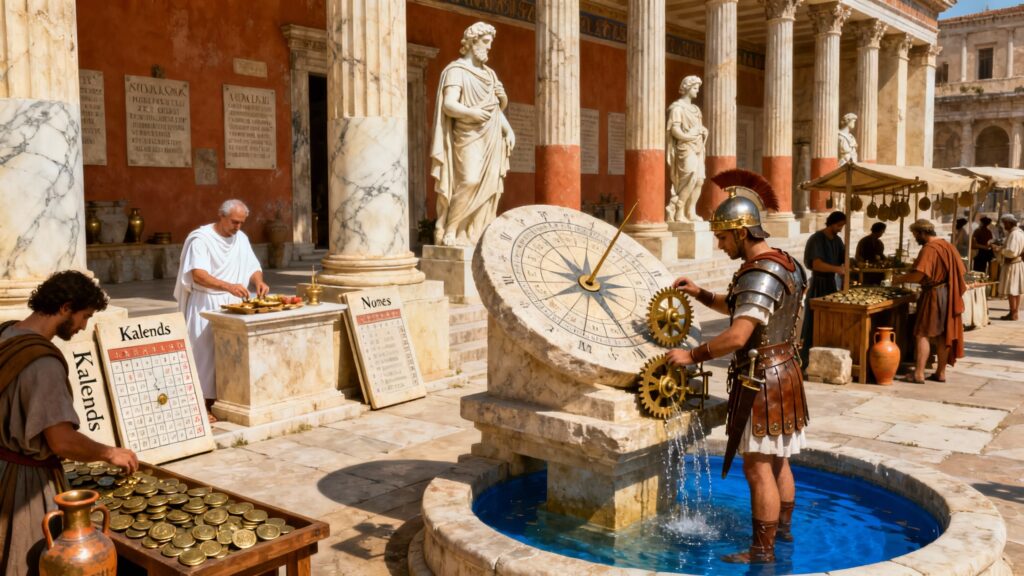
Water Clocks (Clepsydras): The Mechanical Revolution in Time Measurement
Water clocks, or clepsydras, introduced a new way to measure time independent of the sun’s position. Unlike sundials, which relied on daylight and clear skies, these devices tracked time through the steady flow of water. This innovation allowed Romans to measure time even during the night or on cloudy days.
The Influence of Egyptian Design
The design of Roman water clocks drew heavily from Egyptian influence. Early Egyptian clepsydras used simple containers where water either dripped out or filled up at a controlled rate. These basic mechanisms marked the passage of hours by changes in water level, visible against calibrated markings.
Advancements by Roman Engineers
Roman engineers enhanced this concept by incorporating advancements learned from Greek horologists. They developed regulated pressure systems that improved accuracy and consistency in water flow. Some Roman clepsydras featured floating indicators or mechanical elements that moved in sync with water levels, making it easier to read elapsed time.
Practical Applications of Water Clocks
Water clocks served practical purposes in daily life and public events:
- Timing speeches and legal proceedings
- Scheduling religious ceremonies
- Coordinating market activities
Portable versions existed as well, allowing magistrates and officials to keep track of time on the move.
Significance in Non-Celestial Timekeeping
By combining mechanical ingenuity with earlier Egyptian methods, Roman water clocks represented a significant step forward in non-celestial timekeeping technology—expanding temporal measurement beyond what sundials could offer.
This era of innovation was not limited to timekeeping; it also marked a significant transformation in various fields including art. The period saw the evolution of Roman sculpture, which reflected the cultural, political, and social dynamics of ancient Rome. This art form evolved significantly over time, showcasing a distinct focus on realism and the portrayal of power. The sculptures served not only as artistic expressions but also as instruments for political propaganda and religious devotion.
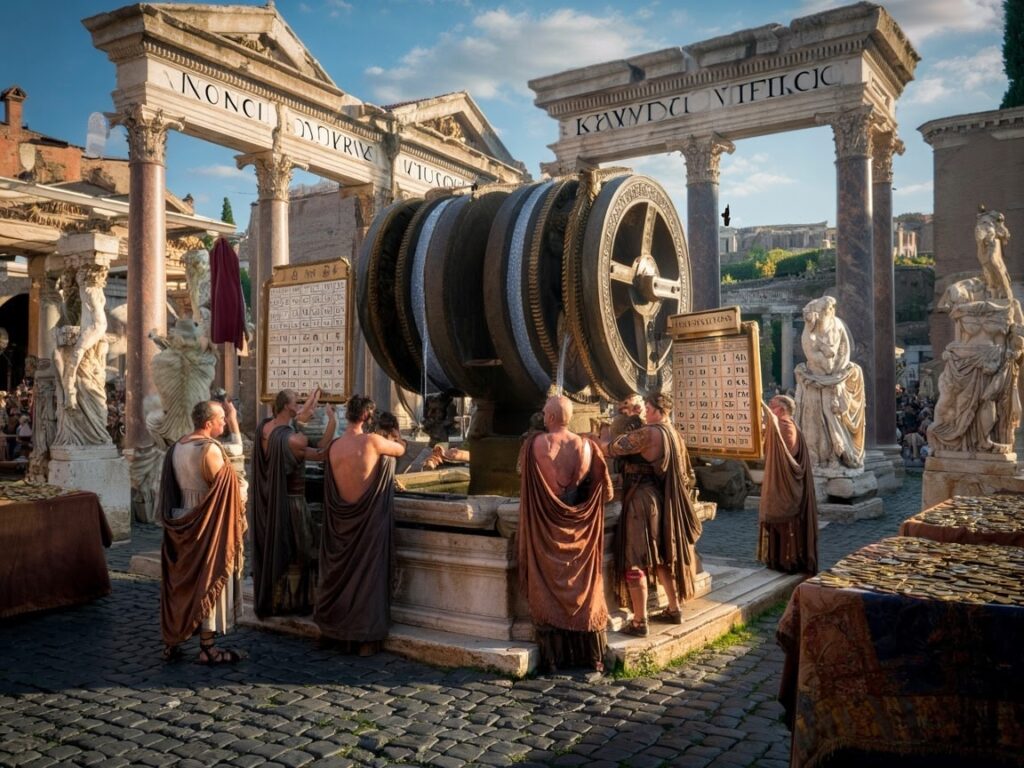
The Evolution of the Roman Calendar System: From Lunar to Solar
The early Roman calendar was primarily lunar-based, consisting of 10 months with days ranging between 29 and 30. This system required periodic adjustments through an intercalary month to maintain alignment with the solar year, which often led to confusion and political manipulation. The necessity for a more consistent and reliable timekeeping method became evident as Roman society grew in complexity.
The Julian Calendar Reform
Julius Caesar introduced a monumental reform in 45 BCE, known as the Julian calendar reform. This solar-based calendar abandoned the lunar cycles in favor of a year length close to the true solar year—365 days with an additional leap day every four years. January 1st was established as the official start of the New Year, reflecting administrative and military needs for standardized record-keeping.
Key Features of the Julian Calendar
Each month in the Julian calendar was structured around named days that organized public life:
- Kalends: The first day of each month, from which other dates were counted.
- Nones: Falling on the 5th or 7th day depending on the month.
- Ides: Marking the middle of the month on either the 13th or 15th.
These named days were essential for scheduling religious festivals, legal deadlines, and civic duties. The Julian calendar’s precision provided a framework that supported Rome’s administrative efficiency and cultural cohesion. Its influence extends into modern timekeeping systems, bridging ancient innovations like sundials and water clocks with our contemporary understanding of calendars.
Legal and Religious Time Classifications in Ancient Rome
Roman society divided time into categories that governed legal and religious activities. Two main classifications were dies fasti and dies nefasti:
- Dies fasti were days when legal business could proceed. Courts were open, public assemblies convened, and official transactions took place. These days supported civic life and reflected a practical approach to organizing societal functions. The influence of these days is evident in the enduring legacy of Roman law, which has shaped modern legal systems across the globe.
- Dies nefasti were prohibited days for legal matters. Activities such as court proceedings or political assemblies were forbidden due to religious observances or superstitions. These days emphasized respect for divine authority and ritual purity.
This system of time classification linked the calendar directly with Roman law and religion, ensuring that societal duties did not conflict with sacred customs.
The influence of Roman timekeeping extended into religious practice, particularly through the development of canonical hours in the Catholic Church. These are specific times set aside for prayer throughout the day, structured by divisions of daylight similar to Roman hours. The Church adapted this method from Roman traditions to regulate daily worship rhythm, reflecting a continuity of temporal organization from antiquity into medieval Christianity.
The clear separation between secular and sacred times in Rome reveals how deeply embedded timekeeping was in shaping social order and spiritual life. This duality helped maintain balance between civic responsibilities and religious devotion, a concept still echoed in modern frameworks of work-life scheduling.
Moreover, the influence of Roman society on Western civilization is profound, with their intricate social structures, cultural practices, and innovative ideas laying the groundwork for many aspects of modern life. From their legal systems to their architectural marvels, the legacy of Rome is woven into the very fabric of contemporary society.
In addition to law and societal structure, masterpieces of Roman art also serve as a testament to the empire’s vast reach and its ability to assimilate and innovate various cultures over centuries. However, this powerful civilization eventually faced challenges such as political instability and weak leadership, which contributed to its decline.
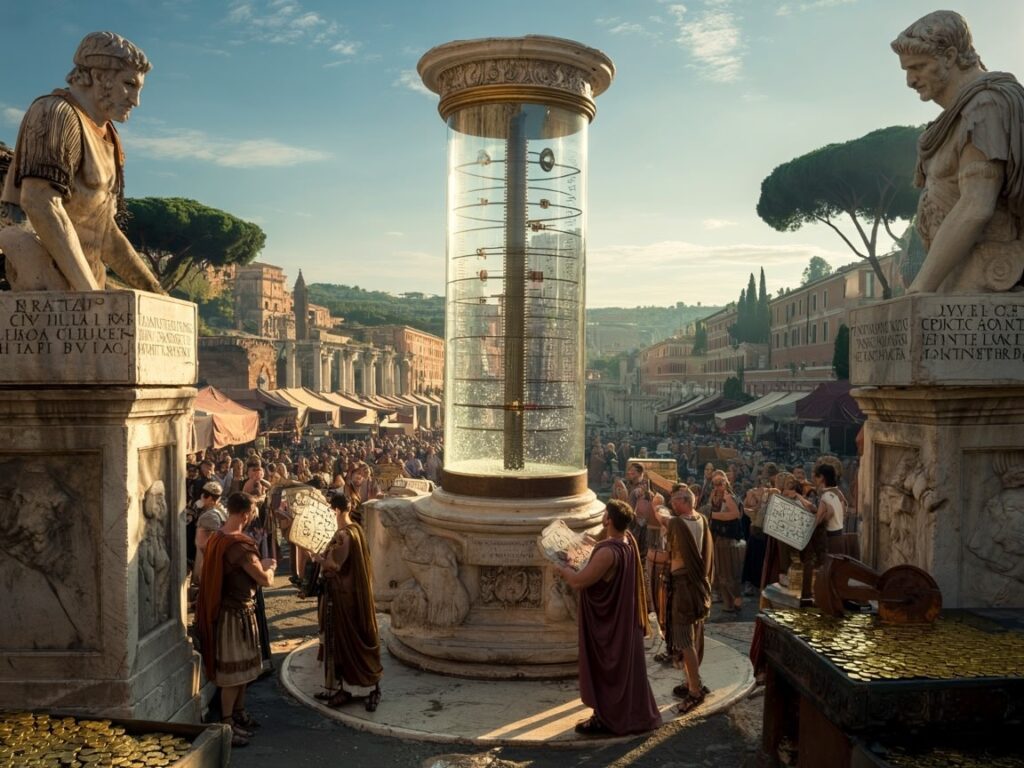
The Enduring Legacy of Roman Timekeeping on Modern Systems
Roman contributions to Western timekeeping traditions remain deeply embedded in how we measure and organize time today. One of the most significant legacies is the division of daylight into 12 hours, an idea that shaped the concept of the modern hour. Although Roman hours varied in length by season, their system introduced a structured way to segment the day, influencing later fixed-hour systems.
The Julian calendar, introduced by Julius Caesar in 45 BCE, marks another cornerstone in temporal organization. Its solar-based approach replaced earlier lunar calendars and established a 365-day year with a leap year every four years. This innovation corrected seasonal drift that plagued prior calendars and aligned civil time more closely with astronomical cycles.
Key features of the Julian calendar persist in today’s Gregorian calendar, which refined leap year rules to improve accuracy but retained much of the original framework. The names and lengths of months, as well as the division into weeks and days, descend directly from Roman practices.
Roman timekeeping also influenced cultural perceptions of time management and scheduling that extend beyond just technical measures. Concepts like dividing days into AM and PM periods, setting fixed dates for legal or religious events, and structuring public life around standardized timekeeping echo ancient Roman systems.
The impact of Rome extends beyond mere timekeeping; it also infiltrated various aspects of life including military strategy and religious beliefs. For instance, the Roman military was not just a collection of soldiers but a well-oiled apparatus that combined discipline, strategy, and innovation. This military prowess played a crucial role in expanding the empire’s influence, thereby affecting various societal aspects including time management.
Moreover, Roman religious beliefs, reflected through their pantheon of gods, also shaped cultural practices that intertwined with their timekeeping methods. The worship of deities associated with power, justice, and wisdom often dictated specific times for rituals and ceremonies.
In summary:
- Hour divisions rooted in sundial use laid foundations for modern clocks.
- The Julian calendar created a solar-year system still fundamental to global civil calendars.
- Roman innovations established principles shaping Western temporal frameworks centuries later.
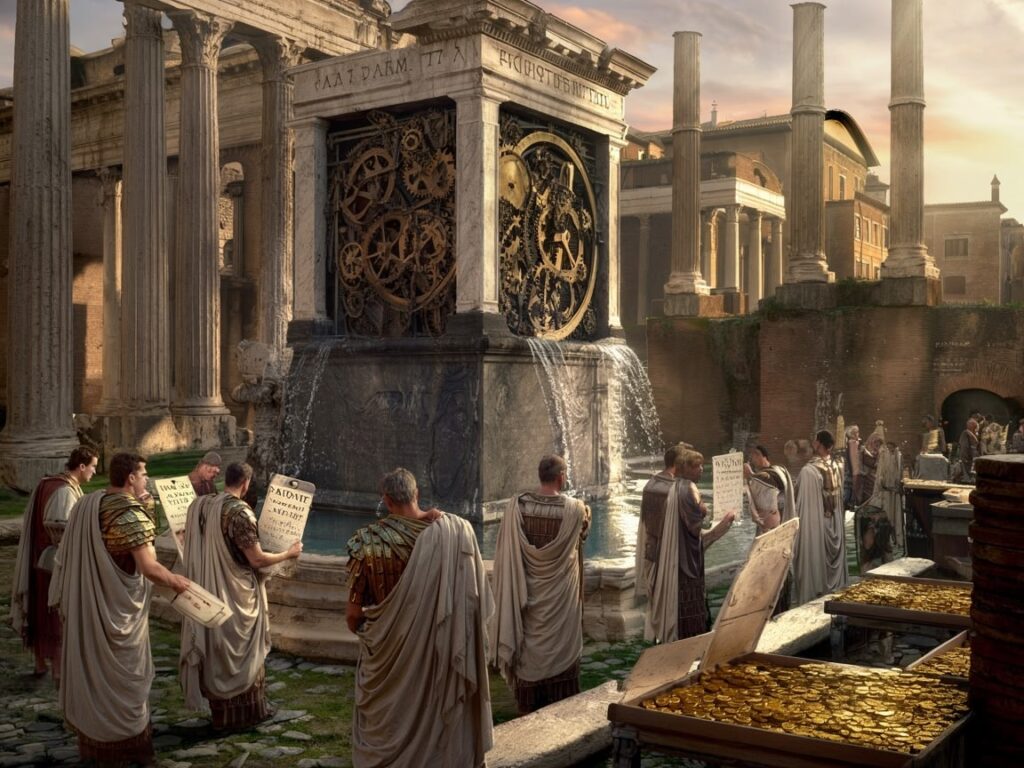
Conclusion
Science of Roman Timekeeping: Sundials, Water Clocks, and Calendars Explained reveals an ancient innovation legacy that still influences how you measure and organize time today. The Romans didn’t just create tools; they built a foundation for modern temporal systems through:
- Precise methods of dividing daylight with sundials
- Ingenious mechanical water clocks for consistent timing
- A calendar reform that shaped the structure of the year
Appreciating these historical roots helps you understand the depth behind everyday timekeeping practices. Their impact reaches beyond technology to legal, religious, and social frameworks still recognizable in contemporary life.
Exploring further into ancient Roman civilization offers rich insights into how innovations from over two millennia ago continue to shape your world. Time itself, as you experience it, owes much to the Roman quest for order and precision.
FAQs (Frequently Asked Questions)
What were the primary methods Romans used to measure time in ancient times?
Ancient Romans primarily used sundials, water clocks (clepsydras), and calendars to measure and organize time. Sundials utilized the sun’s shadow cast by a gnomon, while water clocks measured time through regulated water flow. The Roman calendar evolved from lunar-based systems to the solar Julian calendar.
How did Roman sundials function and where were they typically placed?
Roman sundials worked by using a gnomon that cast a shadow onto calibrated hour lines, allowing people to tell time based on the sun’s position. Various types of sundials existed, often installed in public spaces to provide communal timekeeping for citizens throughout the day.
What is the significance of water clocks (clepsydras) in Roman timekeeping?
Water clocks represented a mechanical innovation in ancient Roman time measurement, allowing non-celestial tracking of time through the steady flow of water. Influenced by Egyptian designs and enhanced by Greek developments like regulated pressure systems, clepsydras offered more consistent time measurement regardless of sunlight availability.
How did the Roman calendar evolve from lunar to solar systems?
The Roman calendar transitioned from an early lunar-based system to the solar-based Julian calendar reform initiated by Julius Caesar. This reform standardized the year length and introduced named days such as Kalends, Nones, and Ides to structure each month, aligning the calendar more closely with the solar year.
What role did legal and religious classifications of days play in Roman society?
Roman society distinguished between dies fasti—days when legal business could be conducted—and dies nefasti—days when such activities were prohibited due to religious observances. This classification influenced societal routines and also impacted traditions like the Catholic Church’s canonical hours.
In what ways has Roman timekeeping influenced modern systems?
Roman innovations laid foundational concepts for modern Western timekeeping, including division of hours still used worldwide today. The Julian calendar served as a precursor to the Gregorian calendar currently in use, demonstrating Rome’s enduring legacy on how we measure and organize time in contemporary society.

